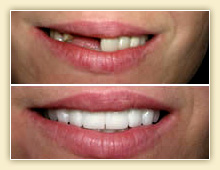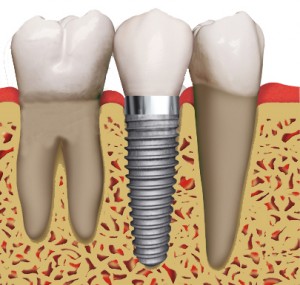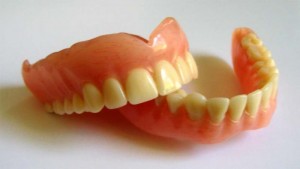The number of teeth in our mouth may tend to decrease with age due to poor oral hygiene, tooth decay, gum diseases and many other causes. When teeth are missing, many problems can arise – the way you bite gets affected, food can easily get trapped in the spaces and teeth can drift. Though there are those lucky few who managed to maintain a complete dentition till their old age, never fret for there are many options to fill in the gap or gaps in your mouth to recreate your perfect smile.
Why replace missing teeth
- Restore appearance – for many people with missing front teeth in their mouth, appearance is an important consideration.
- Ability to eat – many individuals manage to eat quite successfully with large numbers of teeth missing. Some have a genuine and persistent feeling of awkwardness if they are deprived of one back tooth. Generally though, the more teeth that are missing, the more important is a replacement.
- A feeling of ‘completeness’.
- Improve speech – the upper front teeth are the most important in modifying speech, and so when they are missing they will usually be replaced to improve both speech and appearance.
- Preserve or improve health of oral cavity by preventing food getting trapped in the empty spaces which could increase risk of tooth decay and gum disease in the mouth.
- Space maintenance – if the missing tooth can be replaced before tooth movements occur and when tooth movement is likely, this may well be justified for replacement.
- Restore the facial height (occlusal vertical dimension) – the face may look collapsed with saggy facial muscles when the back teeth are missing, which can also cause other teeth to drift.
- Periodontal splinting – following the successful treatment of advanced gum disease, it may be necessary to splint uncomfortably mobile teeth.
- Wind-instrument players – players of brass or red instruments use their mouth muscles to allow proper supply of air to the instrument. Minor variations in the shape of teeth and missing teeth can have a disastrous effect on the music produced by some players.
Disadvantages of replacing missing teeth
- Damage to tooth and pulp – in preparing teeth as attachments, it may be necessary to remove certain amount of healthy tooth tissue. Whenever a tooth is prepared, there is a danger to the pulp, even if proper precautions are followed.
- Secondary tooth decay due to faulty replacement.
- Failures of replacement – no matter how good the replacement is, there is always an element of risk for failure.
- Increase plaque accumulation due to poor oral hygiene which can cause gum disease or tooth decay.
- Damage to soft tissues and remaining teeth, exacerbated by poor denture design and/or lack of patient care.
- Cost – many regard the cost of dental restoration as the most important disadvantage in any tooth replacement.
How to replace missing teeth
There are many options available to replace missing tooth or teeth. The most appropriate treatment will depend on various factors including the number of teeth missing; therefore it is best to consult your dentist about the right solution for you.
No replacement of missing teeth
The gap between the teeth is accepted and left empty. It is not always necessary to replace missing teeth. If the benefits of a dental appliance do not outweigh the disadvantages, then replacement is not advised. A bite without any molars present in the jaw (shortened dental arch) is usually functionally adequate. Poorly controlled epilepsy is not indicated for dentures.
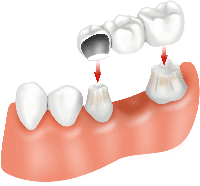 Dental bridges
Dental bridges
Fixed partial dentures or adhesive bridges are preferable for short empty spans with healthy teeth on either side in well-motivated individuals. A dental bridge is an appliance replacing one or more teeth with artificial teeth fixed unto adjacent natural teeth that cannot be removed by the individual.
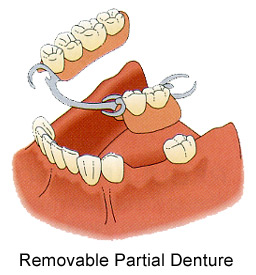 Removable partial dentures
Removable partial dentures
Partial dentures are made from acrylic or metal frameworks carrying artificial teeth. These are indicated for individuals with satisfactory oral hygiene and whose remaining teeth have an adequate prognosis, or as in a training/interim appliance prior to full dentures.
Dental implants
Dental implants can be used for single or multiple missing teeth whereby titanium cylinders are painlessly drilled into the jaw bone and artificial teeth or a denture is attached onto it.
Dental implants are constructed from a range of materials such as titanium, stainless steel, titanium alloy and zirconium oxide ceramics.
Complete immediate or standard dentures
These are indicated for patients who have already mastered wearing a partial denture and whose remaining teeth have poor prognosis.
In the older individuals with few teeth remaining in their mouths, it is important to assess whether the person is likely to retain some functional teeth for the remainder of their life-span. If this is not likely, some advocate providing full dentures while the person is still young enough to adapt to them.
